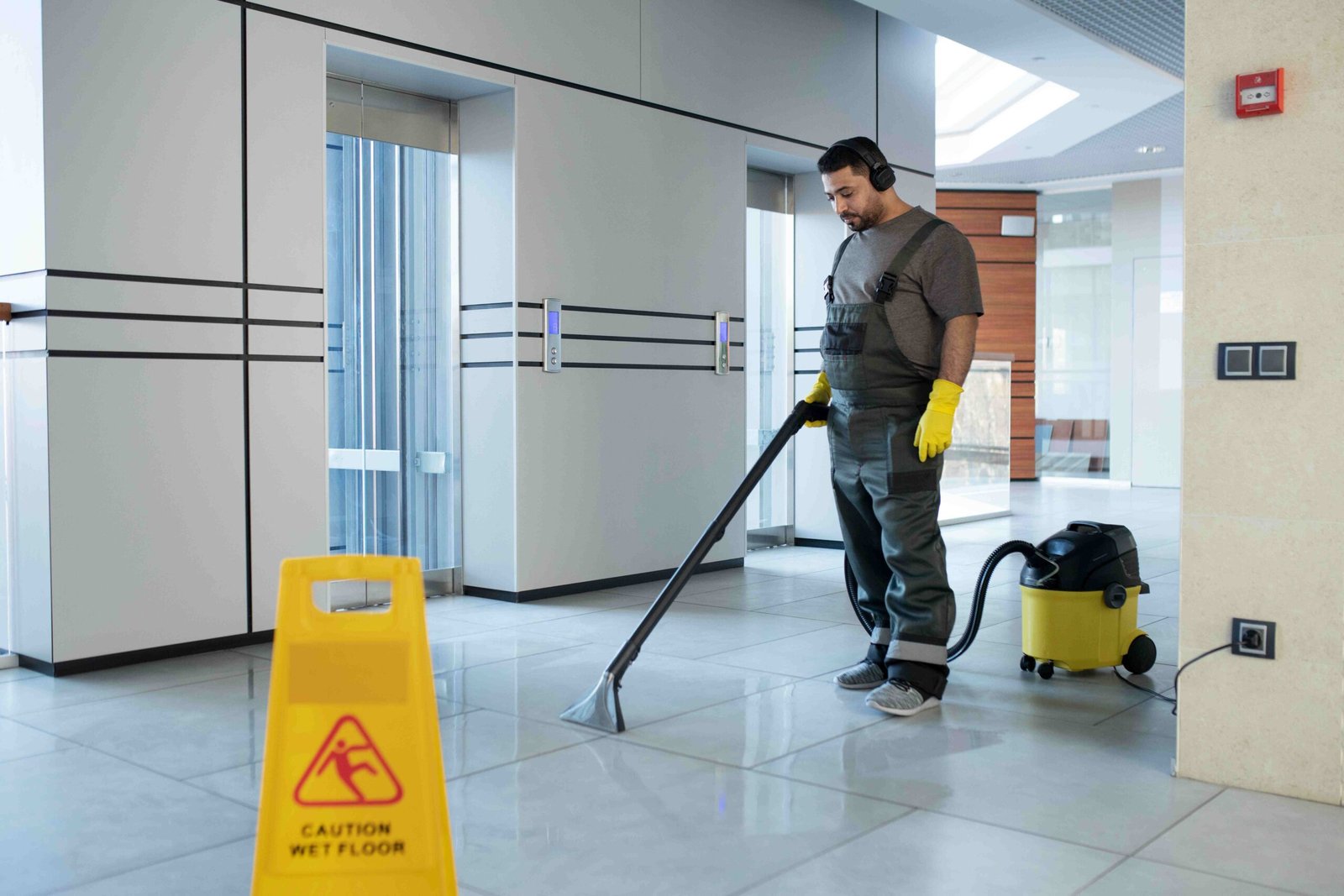Sports flooring is the foundation of every indoor sports facility. Beyond performance features like shock absorption, traction, and durability, one often overlooked yet critical aspect is maintenance and cleaning . A floor that looks pristine and stays hygienic not only extends its lifespan but also ensures athlete safety, performance consistency, and a professional appearance .
The core concern for facility managers, school administrators, and gym owners is:
“How easy is it to clean and maintain? What products and procedures are required to keep it looking new and free of dirt and microbes?”
Ignoring maintenance can quickly compromise traction, ball bounce, and safety, while fostering the growth of harmful microbes. Conversely, a well-maintained floor remains durable, attractive, and safe for athletes for years. This blog dives deep into best practices, recommended products, maintenance schedules, and strategies for keeping sports flooring in top condition.
Why Maintenance Matters
1. Safety and Hygiene
Sweat, dust, and spills are inevitable in sports environments. A dirty floor increases the risk of slips and microbial contamination, potentially causing athlete illness or infections. Regular cleaning reduces these hazards.
2. Preserving Performance
Traction, ball bounce, and shock absorption are affected by dirt, grime, or worn finishes. Maintaining a clean surface ensures consistent gameplay and protects athletes’ joints from unnecessary stress.
3. Extending Lifespan
Proper care prevents premature wear, fading, and damage. Flooring that is regularly cleaned and maintained can last decades rather than years, providing a better return on investment.
4. Aesthetics and Professionalism
A well-maintained floor looks polished and professional, enhancing the facility’s reputation and attracting teams, athletes, and events.
5. Compliance with Standards
Many sports federations, such as FIBA (basketball) and BWF (badminton), expect floors to be hygienic, safe, and well-maintained . Regular cleaning ensures compliance with international sports standards.
Factors Influencing Maintenance Requirements
1. Flooring Material
Different materials require different maintenance procedures:
- Hardwood – Needs careful sweeping, dust mopping, and periodic refinishing. Sensitive to moisture and harsh chemicals.
- Vinyl/PVC – Highly resistant to water and stains; easy to clean with neutral pH cleaners.
- Polyurethane – Seamless, moisture-resistant, low-maintenance; ideal for high-traffic areas.
- Rubber – Extremely resilient; simple to mop, clean, and disinfect.
2. Usage Intensity
High-traffic gyms, school sports halls, and multi-purpose venues require more frequent cleaning and inspection than low-traffic areas.
3. Environmental Factors
Humidity, indoor temperature, and air quality affect cleaning schedules. Dust, dirt, and spilled liquids accumulate faster in poorly ventilated areas.
4. Athlete Footwear and Equipment
Shoes with hard soles, cleats, or spikes, and dragged equipment like bleachers or carts, introduce dirt, scratches, and stress. Facilities with strict footwear policies often require less intensive cleaning .
Daily Maintenance Practices
Proper daily maintenance is the foundation of a clean, safe, and long-lasting floor.
1. Sweeping and Dust Mopping
- Remove dust, dirt, and debris before and after each session.
- Use microfiber dust mops to prevent scratching the surface.
- Pay attention to corners and seams where dirt can accumulate.
2. Spot Cleaning
- Address spills, sweat puddles, or food stains immediately.
- Use neutral cleaning agents that do not damage finishes or cause discoloration.
- Avoid harsh chemicals that may degrade the surface over time.
3. Monitoring Footwear
- Encourage athletes to wear clean indoor shoes only.
- Use entry mats to reduce dirt and moisture being tracked onto the floor.
Weekly and Periodic Maintenance
Daily cleaning isn’t enough. Weekly and monthly procedures keep the floor in top condition:
1. Damp Mopping
- Use a slightly damp mop with a pH-neutral cleaner .
- Avoid excessive water, especially on wood floors, to prevent swelling and warping.
2. Surface Inspection
- Check for scratches, dents, or loose panels.
- Inspect seams and edges for curling or lifting.
- Address minor issues immediately to prevent long-term damage.
3. Waxing and Polishing (If Applicable)
- Some vinyl floors benefit from periodic waxing to maintain gloss and protective layers.
- Hardwood floors may require specialized polish or finish application to preserve durability.
Cleaning Products: What Works Best
Choosing the right cleaning products is essential to protect both the floor and athletes:
1. Neutral pH Cleaners
- Safe for vinyl, polyurethane, and wood floors.
- Effectively remove dirt without compromising finishes.
2. Disinfectants
- Prevent microbial growth from sweat and moisture.
- Choose products approved for sports environments that won’t leave slippery residues .
3. Specialized Wood Cleaners
- Designed to clean and condition hardwood floors.
- Avoid ammonia or bleach-based solutions that may damage the finish.
4. Microfiber Mops and Soft Brushes
- Reduce scratching while removing fine dust particles.
- Avoid steel wool or abrasive pads.
5. Anti-Static Agents
- Some vinyl floors benefit from anti-static sprays to prevent dust accumulation and maintain surface integrity.
Managing Moisture and Humidity
Moisture is one of the biggest threats to sports flooring:
- Wood floors swell in high humidity and shrink in dry air.
- Vinyl floors can lift or warp if moisture seeps from the subfloor.
- Rubber floors can develop mold in poorly ventilated, damp environments.
Best Practices:
- Use dehumidifiers in humid climates.
- Maintain indoor humidity between 35–55%.
- Wipe up spills immediately to prevent long-term damage.
- Install proper ventilation to minimize condensation.
Handling High-Traffic Events
Special events or tournaments increase the stress on flooring surfaces. Proper preparation and post-event care ensure longevity:
- Protective Coverings – Use mats or temporary covers for bleachers, chairs, or equipment.
- Frequent Sweeping and Mopping – Prevent debris buildup during multi-day events.
- Post-Event Inspection – Identify scratches, dents, or finish wear immediately.
These measures prevent small damages from turning into larger, costly issues.
Microbial Control: Hygiene Is Key
Sports floors are high-contact areas, making microbial control critical:
- Sweat and moisture encourage bacteria and fungi growth.
- Disinfecting solutions safe for the flooring surface are essential.
- Regular cleaning schedules reduce infection risks for athletes.
- Ensure mops, cloths, and cleaning equipment are themselves clean and disinfected .
Long-Term Maintenance: Extending Floor Life
To maximize lifespan, combine daily cleaning with long-term care:
1. Periodic Deep Cleaning
- Strip old finishes from vinyl or polyurethane floors every few years.
- Reapply protective coatings to maintain slip resistance and shine.
2. Refinishing Hardwood Floors
- Sanding and refinishing restore appearance and performance every 7–10 years depending on use.
- Maintains shock absorption, traction, and aesthetics.
3. Equipment Protocols
- Place protective pads under heavy equipment.
- Avoid dragging furniture or machinery across the floor.
4. Climate Management
- Keep temperature and humidity consistent year-round to prevent warping or curling.
- Monitor for water leaks or condensation near entrances.
Choosing Flooring for Easy Maintenance
Some materials naturally require less effort:
- Vinyl and polyurethane floors – Low-maintenance, easy to clean, moisture-resistant.
- Rubber floors – Extremely resilient, disinfectable, and resistant to wear.
- Hardwood floors – Require more careful, ongoing maintenance but provide superior performance for professional play.
Facilities must consider usage intensity, athlete demographics, and budget when selecting flooring for maintenance efficiency.
Real-World Examples
- School Gyms – Vinyl sports flooring allows for daily cleaning, quick spill management, and low-cost upkeep.
- Professional Arenas – Hardwood floors are maintained daily with specialized mops, cleaning solutions, and periodic refinishing.
- Community Centers – Rubber flooring in multi-purpose halls resists dents, is easy to mop, and disinfect regularly for public use.
These examples illustrate how proper maintenance strategies align with flooring material and usage patterns.
Conclusion
Maintenance and cleaning are critical for safety, performance, and longevity in sports flooring. A clean floor:
- Reduces slips and microbial risks.
- Maintains consistent traction and ball bounce.
- Preserves the floor’s appearance and durability.
- Extends the life of your investment.
Best practices include:
- Daily sweeping and spot cleaning.
- Weekly damp mopping and inspection.
- Using neutral pH cleaners and disinfectants suitable for sports environments.
- Managing moisture and indoor climate.
- Periodic deep cleaning, refinishing, and protective protocols for heavy equipment.
By following these strategies, facility managers ensure that sports floors remain safe, hygienic, and high-performing year after year. Maintenance is not a chore—it is a strategic investment in athlete safety, facility reputation, and financial sustainability.
Well-maintained flooring gives athletes confidence, supports performance, and guarantees that your facility remains a professional, safe, and inviting space for years to come.



